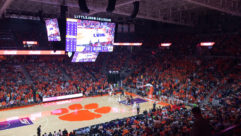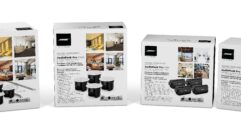
Inside Look: Bose RoomMatch Loudspeakers
Sep 20, 2011 10:44 AM, By Cynthia Wisehart

Fifteen years ago Akira Mochimaru started working on an audacious goal with a group of Bose R&D engineers. The theory was to build a better sound reinforcement speaker, one whose coverage and sound pressure level completely matched each facility. Now, as general manager for the Bose Professional Systems Group, he’s seeing the results of that goal. This month, the first Bose RoomMatch loudspeakers went on sale—and into service in their first commercial installation at Sweden’s Kinnarps hockey stadium.
“The nature of the company is to try for the impossible,” Mochimaru says. “But we didn’t think it was impossible. Our team knew the solution, the challenge was a practical issue—the manufacturing. Also, back then, we were thinking about a custom loudspeaker solution for each installation. We were envisioning a very unique and custom product. When we started talking to our customers—audio consultants and systems integrators—they all said, ‘No way.’”
Why the thumbs down? For most of the big jobs that could use custom loudspeakers, planning starts five years before, and everybody from the architect to the HVAC engineer has an idea of how money should be spent. “Audio is not always on the top of the shopping list,” Mochimaru says wryly. “Speakers come after dealing with all other things.” Further, custom speaker require six months to a year of manufacturing, during which time conditions on the job site can change significantly, enough to render the solution impractical. “Also if people are not sure about the acoustic performance of a speaker as a complete product, no one wants to buy.”
So in 2001, Bose shelved the idea. “But I couldn’t give up even after I left R&D,” Mochimaru says. “I couldn’t forget about it. In the meanwhile, the industry had moved to line array solution. So one day I had an idea: We can use vertical modules like a line array concept.” Like a Lego block. The modules would all be standard sizes and shapes, but could be assembled (even by the integrator) into any shape—so custom without being a custom product.
“Saying it easy, but it took four years.” One big challenge was how to create custom modules that have various coverage patterns without requiring custom tooling. The horn in the RoomMatch module consists of sidewalls made from a flat sheet of plastic cut by a CNC machine to form a 3D concave shape. The vertical coverage is controlled by six extended mid-range small HF (high frequency) compression drivers attached to the independent throat adapters to form Continuous Arc Diffraction Slot (CADS) manifold.
The extended mid-range HF compression driver enables the RoomMatch modules to provide meaningful vertical coverage controls without creating any audible phase cancellations, both within module and between modules. This was only possible because the driver goes down to 300Hz from only 3 1/8in. outside diameter.
The final push, Mochimaru says, was in making the product sound good aesthetically. “We knew it was a revolutionary idea, but in the end, the clients, operators, consultants, and architects really care about the tonal quality, ” he says. “If we missed on delivering the best tonal balance or coverage control, someone in the decision-making group may object.” The result, he says, is that the RoomMatch speakers are competitive right out of the box—live concert-quality sound. No extra EQ.










